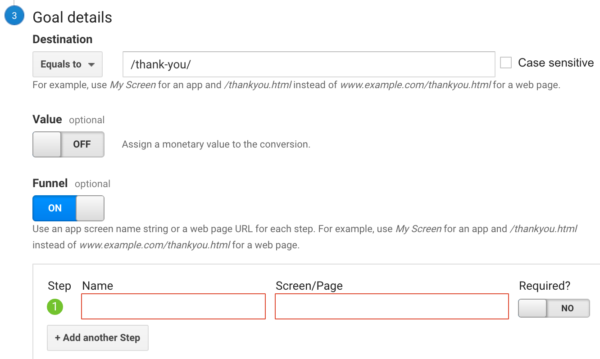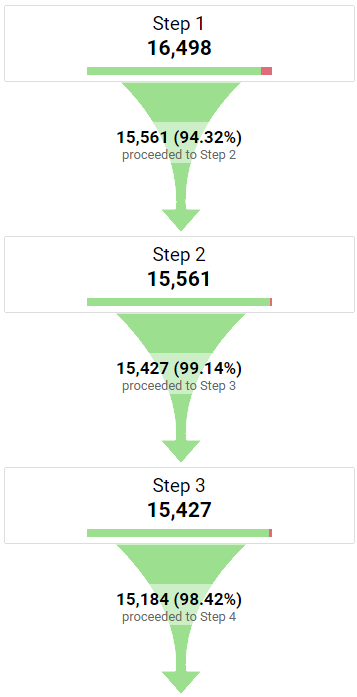Introducing the Blind Spots: Comprehending What Google Analytics Goals Can not Measure
In the realm of electronic analytics, Google Analytics stands as an effective device for tracking and evaluating online customer interactions. Understanding what Google Analytics objectives can not determine is essential for gaining a thorough view of customer behavior and engagement.
Customer Behavior on External Operatings Systems
Understanding how individuals interact on exterior platforms is critical for maximizing on the internet approaches. Outside platforms, such as social networks networks, referral web sites, and online discussion forums, play a significant duty in driving traffic to a firm's website. By analyzing individual behavior on these platforms, organizations can obtain beneficial understandings right into the performance of their advertising efforts and the choices of their target market.
One key element of user habits on external platforms is the reference resource. By tracking where the users are originating from, companies can identify which platforms are driving one of the most traffic to their site. This info can help companies allocate their sources better, concentrating on the systems that yield the most effective outcomes.

Offline Interactions and conversions
Analyzing customer habits on outside systems supplies useful insights into on-line strategies; however, considering offline conversions and interactions is similarly imperative for an extensive understanding of a company's general efficiency. While Google Analytics stands out at tracking on the internet communications, it drops brief in recording the complete customer journey that usually includes offline touchpoints. Offline conversions, such as in-store purchases or phone queries, play a substantial role in lots of companies' success. Overlooking these communications can result in an altered view of the performance of advertising and marketing campaigns and total organization performance.

Attribution Beyond Last Click
When delving right into the world of electronic advertising and marketing analytics, it becomes important to look past the solitary touchpoint of the last click for a more comprehensive understanding of attribution. While Google Analytics gives beneficial understandings into user actions, relying solely on last-click acknowledgment can be limiting - what data is google analytics goals unable to track. Acknowledgment versions that exceed the last click offer a more nuanced view of the client journey, taking into consideration all the touchpoints that bring about a conversion
Acknowledgment past the last click allows marketing professionals to designate credit score to different communications along the conversion path, giving a clearer photo of the efficiency of different marketing channels. By discovering multi-touch acknowledgment designs such as straight, time degeneration, or position-based official website attribution, companies can much better assign their advertising and marketing budgets and enhance their techniques for optimal impact.
Recognizing the impact of each touchpoint in the conversion process is crucial for making educated choices and making the most of ROI. By welcoming attribution past the last click, businesses can get much deeper understandings right into client actions and tailor their advertising and marketing efforts a lot more successfully.
Cross-Device and Cross-Browser Tracking

Similarly, cross-browser monitoring enhances cross-device monitoring by capturing user behavior as they change in between various internet internet browsers. Recognizing just how customers connect with websites on different web browsers can aid marketing professionals maximize their online experiences to ensure consistency and functionality across various systems.
Qualitative Data and User Intent
Understanding user intent via qualitative data evaluation is crucial for creating targeted electronic advertising and marketing methods that resonate with the needs and preferences of the target audience. Qualitative information provides understandings right into the 'why' behind individual actions, clarifying motivations, emotions, and choices that measurable information alone can not record. By examining customer comments, comments, and communications, marketing experts can discover useful info about customer intent, allowing them to customize their messaging, material, and offerings to much better straighten with what their target market is seeking.
Qualitative information additionally aids in comprehending the context in which users involve with a website or app. This contextual understanding enables marketing experts to produce more tailored and appropriate experiences, ultimately driving greater involvement and conversion rates. By delving into user intent via qualitative data analysis, businesses can acquire a much deeper understanding of their target audience, leading to a lot more efficient marketing methods that fulfill customers' requirements and assumptions.
Conclusion
To conclude, Google Analytics goals have restrictions in gauging user habits on exterior platforms, offline conversions, acknowledgment beyond last click, cross-browser and cross-device tracking, and qualitative data associated with user intent. what data is google analytics goals unable to track. It is essential for services to be familiar with these unseen areas in order to supplement their data analysis with other tools and techniques to obtain a more detailed understanding of their target market and boost their general digital advertising approaches
By assessing user behavior on these systems, businesses can get valuable insights right into the performance of their marketing efforts and the choices of their target audience.
Analyzing individual habits Our site on exterior systems provides valuable insights into online techniques; nevertheless, taking into consideration offline conversions and communications is just as vital for a thorough understanding of a business's general efficiency.In electronic advertising and marketing analytics, relocating beyond last-click attribution to check out cross-device and cross-browser monitoring is important for acquiring an alternative understanding of individual interactions throughout various platforms and devices. By evaluating individual comments, comments, and interactions, marketers can reveal beneficial details concerning individual intent, allowing them to tailor their messaging, web content, and offerings to much better line up with what their target market is seeking.
By delving right into user intent via qualitative information analysis, businesses can gain a much deeper understanding of their target audience, leading to a lot more i thought about this efficient marketing strategies that fulfill individuals' assumptions and needs.